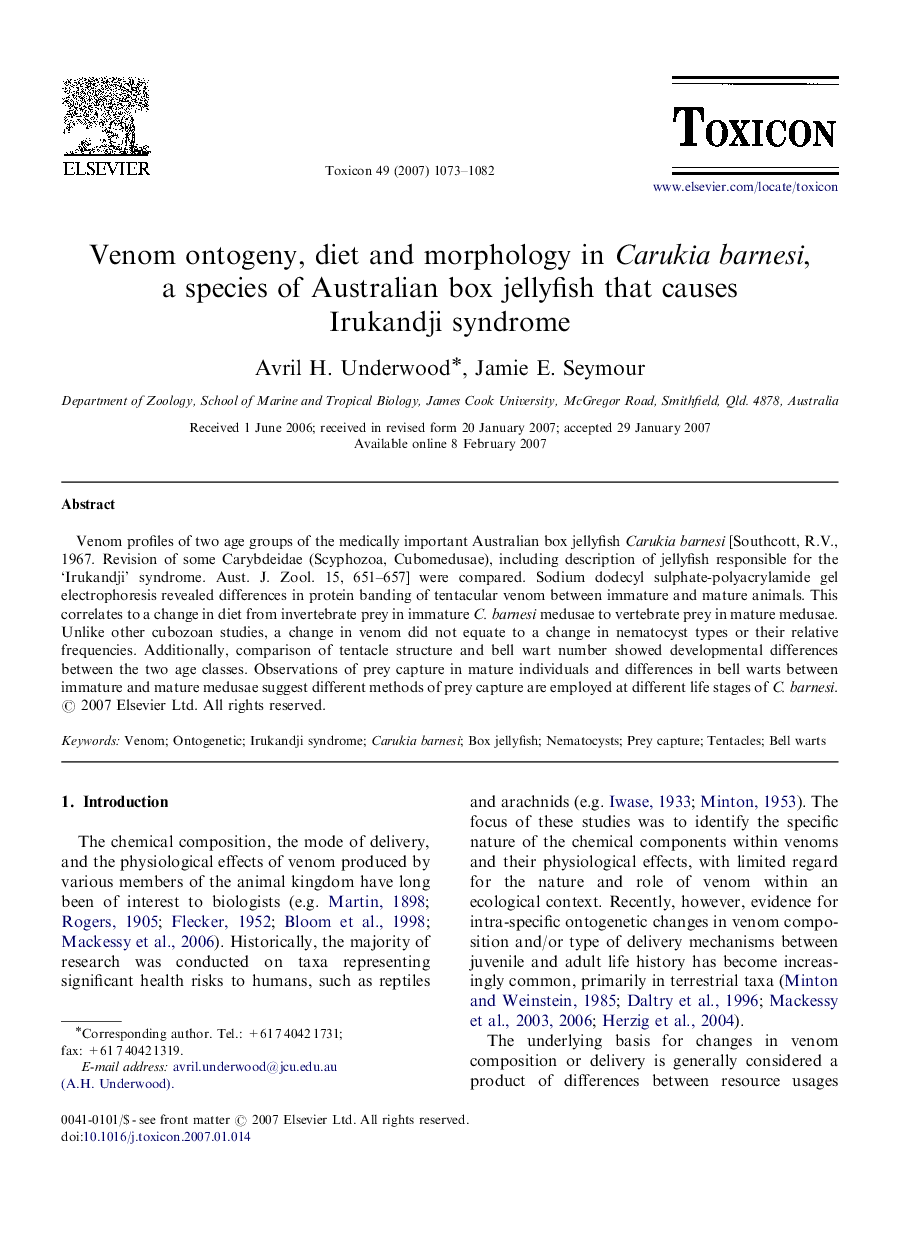| Article ID | Journal | Published Year | Pages | File Type |
|---|---|---|---|---|
| 2066046 | Toxicon | 2007 | 10 Pages |
Venom profiles of two age groups of the medically important Australian box jellyfish Carukia barnesi [Southcott, R.V., 1967. Revision of some Carybdeidae (Scyphozoa, Cubomedusae), including description of jellyfish responsible for the ‘Irukandji’ syndrome. Aust. J. Zool. 15, 651–657] were compared. Sodium dodecyl sulphate-polyacrylamide gel electrophoresis revealed differences in protein banding of tentacular venom between immature and mature animals. This correlates to a change in diet from invertebrate prey in immature C. barnesi medusae to vertebrate prey in mature medusae. Unlike other cubozoan studies, a change in venom did not equate to a change in nematocyst types or their relative frequencies. Additionally, comparison of tentacle structure and bell wart number showed developmental differences between the two age classes. Observations of prey capture in mature individuals and differences in bell warts between immature and mature medusae suggest different methods of prey capture are employed at different life stages of C. barnesi.
